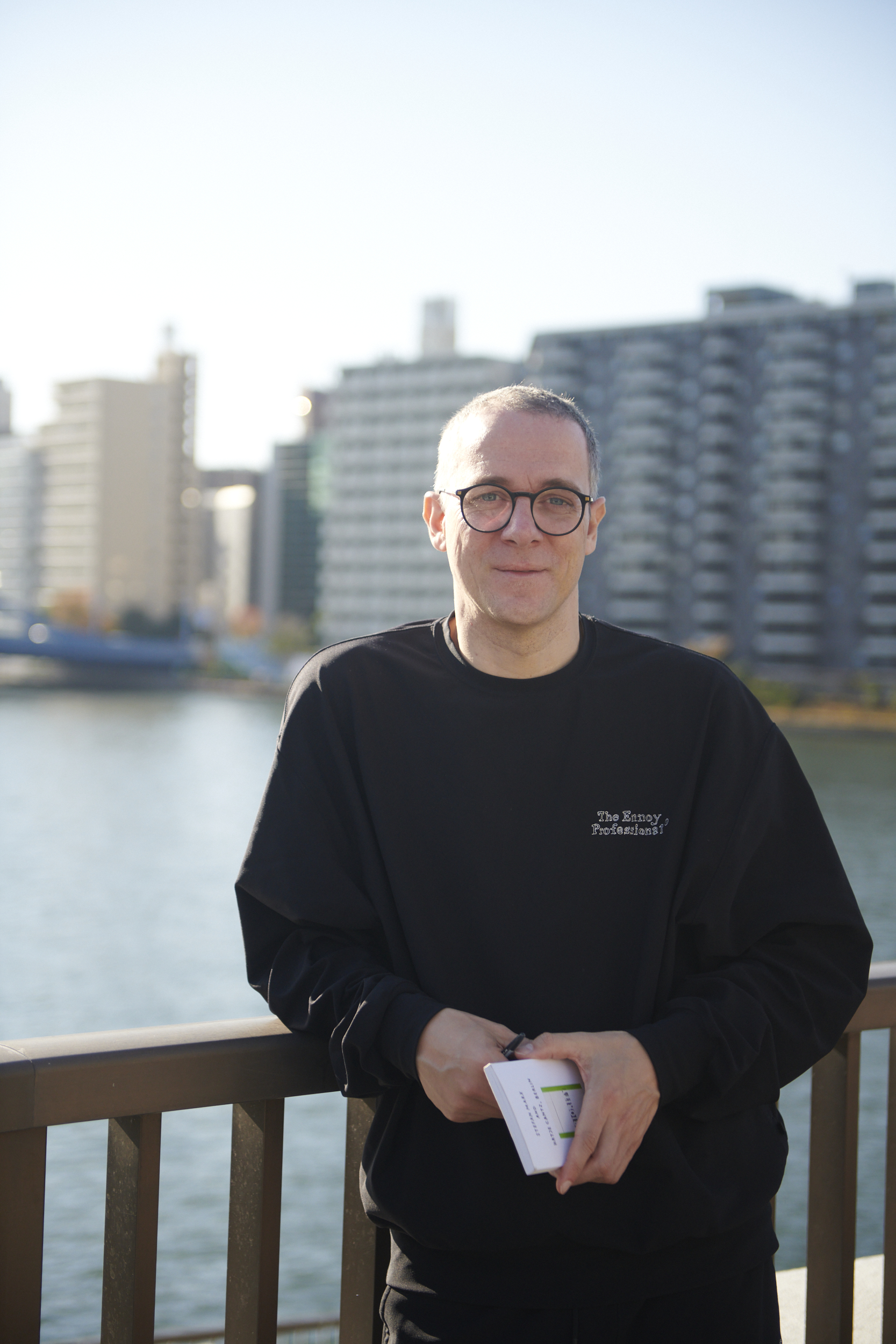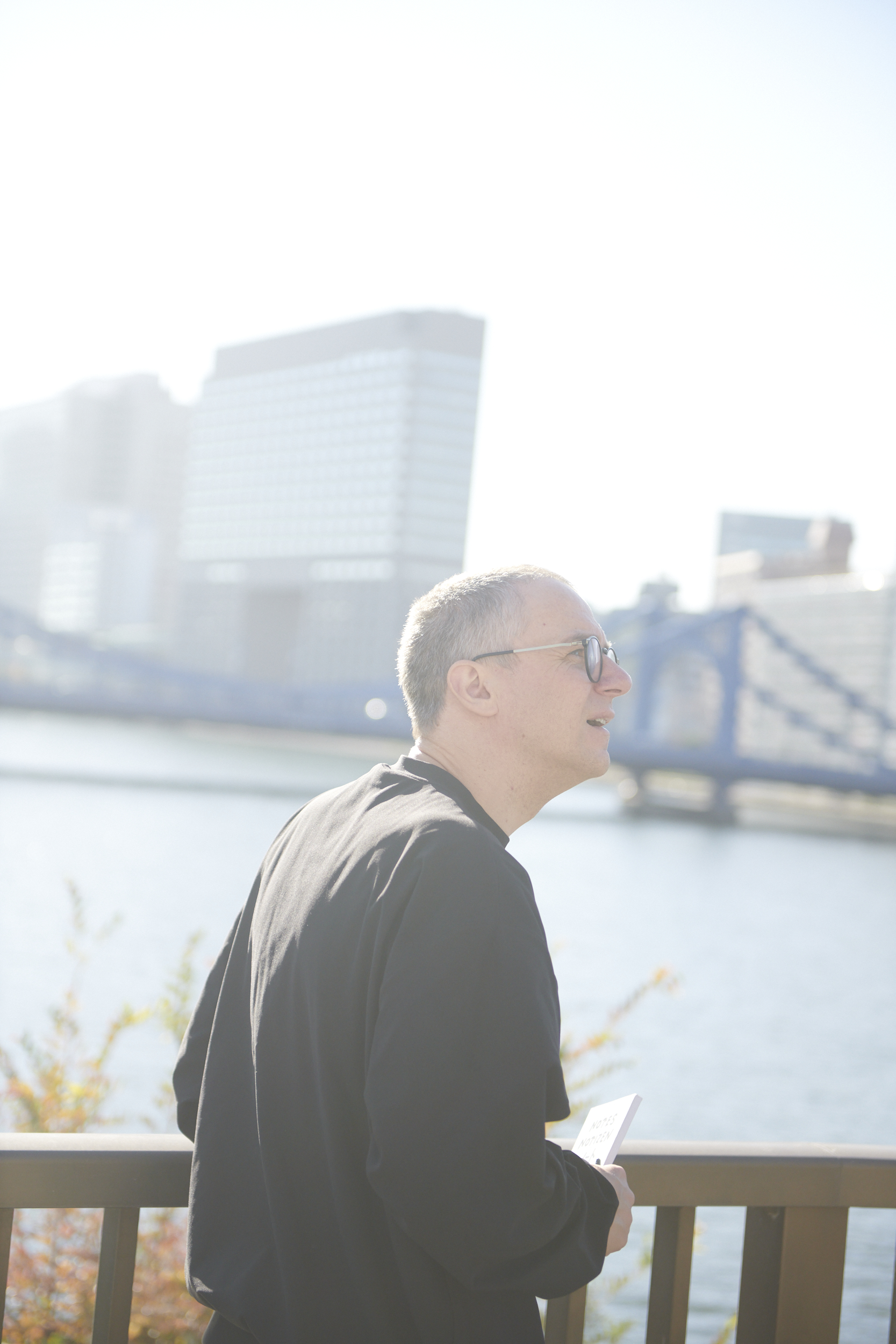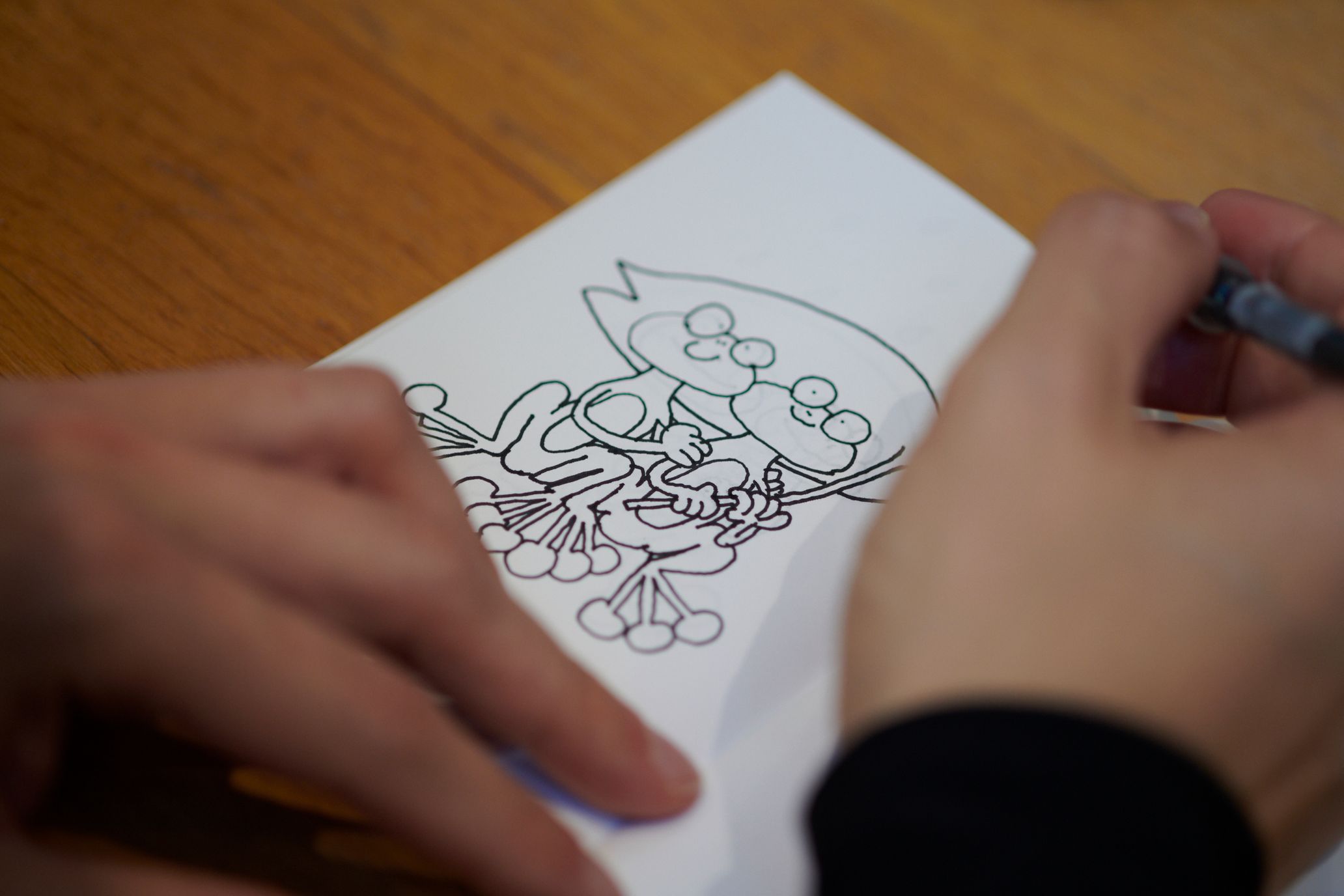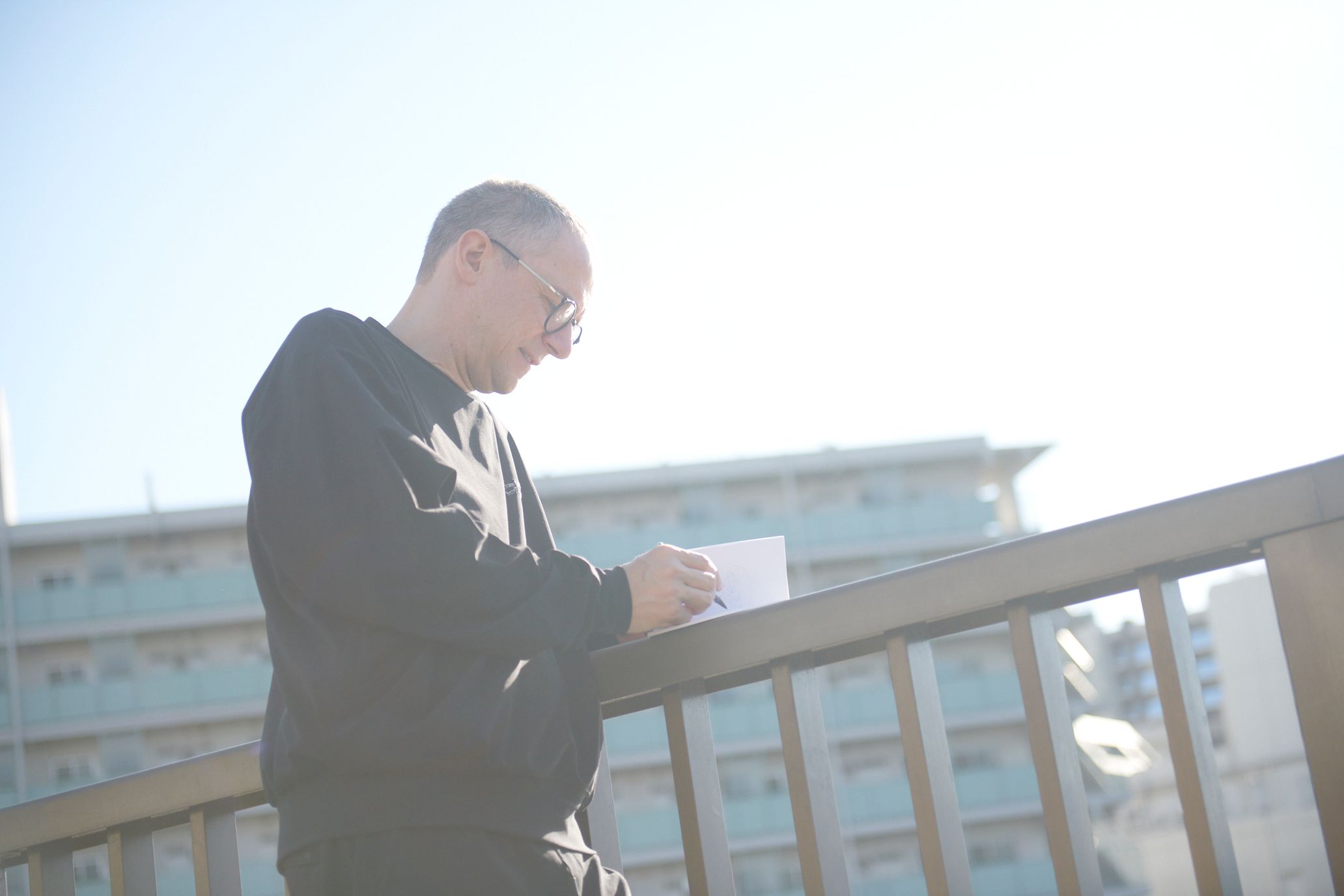
Stefan Marx
Born in 1979 in Germany, Stefan Marx is an artist and illustrator based in Berlin, having relocated from Hamburg. Drawing inspiration from his passions such as drawing, skateboarding, books, and sketchbooks, he showcases his talents across various fields, including publishing art collections, art exhibitions, public art, and designing record jackets. Through his drawings and illustrations, Marx expresses his worldview, philosophy, and indie spirit as a skateboarder, offering a unique perspective on the world. At the age of 15, he founded the independent T-shirt label “Lousy Livin’ Company,” producing high-quality and creative T-shirts in limited quantities. He has also collaborated with numerous brands and companies, ranging from skateboard brands like “MAGENTA SKATEBOARDS” and “5BORO” to larger entities like “IKEA.” Several art books featuring his works have been published by publishers such as Nieves and Dashwood Books.
Instagram: @stefanmarx
Stefan Marx, an artist based in Berlin, Germany, has been influenced by cultural elements like skateboarding and music since his youth. His love of skateboarding and music from his youth led him to creative activities such as T-shirt and record jacket design, and later to the field of fine art. His typography, characterized by a floating sensation and condensed inspiration, serves as a device that expands the imagination of the viewer, evoking a sense of openness. Marx’s drawings, born from everyday observations and constant practice, exude a gentle, adorable, and comical charm, resonating with a wide audience through their sincere sensibility. Furthermore, when his works are applied to constructive spaces or architectural products, they create impactful suggestions beyond literal meanings, infusing new significance into places and objects. Despite evolving his creativity, Marx maintains his independent stance consistently. In recent years, he has explored collaborations with fashion brands like “Supreme” and “Comme des Garçons,” expanding the possibilities of merging art with commerce.
An interview was conducted with Stefan, who visited Japan this time. In the first part, we discussed the origin and progress of his creative activities, as well as the sentiments involved. In the second part, we inquired about his stance on typography and public art, which are themes of his representative works, as well as introducing and outlining the purpose of his new book, and collaborations with other artists. We asked about his approach to art as an open space, fostering the exchange of people’s free sensibilities and synergistic effects.

Visualizing inspiration derived from experience through typography
–Recently, an exhibition centered around typography artworks was held at the “Ruttkowski;68” gallery in New York. In the statement accompanying the exhibition, it was mentioned that “the text is inspired by lyrics.”
Stefan Marx(Stefan): Certainly, in the early days, I used to create artworks inspired by lyrics, but it’s different now. For example, Sunrise Sunset was conceptualized with ideas from both words and composition, visualized in my mind and then manifested into the artwork. Recent works often focus on compositions with words positioned at the top and bottom of the screen, with space in between.
Additionally, Listen to the Rain was inspired by experiences in Japan. In Japan, when it rains, many people use vinyl umbrellas, and when raindrops fall on them, it creates a distinct sound. This unique phenomenon of listening to the rain in Japan became the inspiration for the artwork.
In this way, typography artworks often stem from visiting various places and drawing inspiration from situations and experiences, resulting in their visual representation.
–Recent works tend to exude a poetic atmosphere.
Stefan: I perceive both words and drawings as visual images. I’m constantly thinking about words and drawings, accumulating various ideas in my mind, and they blend together to become artworks. Whether I’m walking, riding the train, listening to music, reading a book, or even browsing comments on social media, I sometimes get ideas from everywhere.
In typography artworks, I consider not only the literal meaning of words but also how to effectively express the imagery derived from them. For example, the artwork Heaven is a simple word, but through the combination of visual effects, it can convey complex meanings and transcend the boundaries of creation. Similarly, Moonlightss is a simple word, but the fluorescent colors shine in the darkness.
In Love Letter, I added information on the back of the artwork, such as “From ○○ to △△,” making it customizable as a unique piece. It’s interesting how this changes the weight and nuances of the words.
–This time, I also challenged myself with Japanese language artworks.
Stefan: When I visited Japan last time, I heard the phrase “omataseshimashita” (おまたせしました) multiple times from airport and restaurant staff, and I was curious about its meaning. I asked my friends to explain it to me and made a note of it.
This time, I decided to turn “omataseshimashita” into a typography artwork and display it. I wanted to convey a double meaning: asking people to wait in line for the Tokyo Art Book Fair’s signing event and expressing my hope that they would continue to participate in the exhibition.
I’m planning to continue working on Japanese language artworks in the future and studying hiragana, katakana, numbers, and more.


Reflecting the region and providing democratic locations accessible to everyone: Public Art
–Among the typography artworks, there are some that are installed on a large scale in urban spaces, resembling billboards in a way. Could you tell us about this project?
Stefan: There is a project to install public art in 30 locations across German cities, and I received offers for three of them: Bochum, Dortmund, and Essen. Subsequently, I also received offers from other cities, such as Basel in Switzerland. In Düsseldorf, a piece I created on the interior walls of the Kunsthalle museum can be viewed by anyone from the outside.
I love the democratic aspect of public art, where everyone can enjoy it for free. The production process is quite challenging, as it involves finding suitable large walls for the artwork, obtaining permission from the owners, ensuring the feasibility of working at heights, and securing the cost of lifts. However, I really enjoy the process and it has provided an opportunity for many people to become familiar with my work.
–When creating large-scale artwork in public spaces, do you have any particular considerations?
Stefan: When creating large-scale pieces in urban areas, I typically opt for monochrome colors. Although I have recently started creating colored pieces as well, I believe that black and white tends to be simpler and blends better with the surroundings. I like to enhance the expression with the contrasting contrast of white and black.
In the case of public art, since the artwork is installed in spaces where many people can see it, I proceed with the production while investigating the origin and history of that location. For the first three cities where I implemented the project, they were once thriving mining areas, so I chose words inspired by lyrics that were popular among laborers in the 19th century. Additionally, considering the size and shape of the walls, I repeatedly verified how the artwork would appear architecturally and spatially while creating it.

Continuing to create works in various forms by observing the everyday world, I want everyone to enjoy them
–This time, you participated in the Tokyo Art Book Fair for the first time. Please introduce your new books.
Stefan: While I’ve been attending the NY Art Book Fair annually since its inception, this marks my first participation in the Tokyo Art Book Fair. My friends, including HIMAA, Utrecht, and twelvebooks, have been asking me every year, “When are you coming?” so I’m glad I could finally make it.
I have four new releases this time. Firstly, there are two accordion-fold books. They document a series where I stand at a single point in a park, rotating 360 degrees while drawing panoramic views from the same position. One book captures the scene when I visited Tokyo in April 2023, guided by Yasukazu Yamamoto, who is a stylist known for his personal items. The other book features drawings made in Yoyogi Park. Since 2006, I’ve been drawing in Yoyogi Park every time I visit Japan, and some of these drawings have even appeared on record jackets.
Additionally, there’s a book co-produced with Dashwood Books in NY and a coloring book published by the traditional Berlin publisher, Hatje Cantz. The latter contains 31 illustrations that were serialized daily in The NY Times in August 2019, now presented as coloring pages. It’s designed with large-sized pages so that children can boldly color them, and it uses very lightweight paper for easy flipping. While this book is for children, it’s also designed to be enjoyed by adults as an artist’s book.
–Why did you decide to create books for children? Did you take any special considerations for children’s books?
Stefan: When I create books, I never specifically target them for anyone in particular.I aim to create something that anyone can enjoy. Even when I previously collaborated with Rollo Press in Switzerland to create children’s books, while many people bought them as gifts for children, adults also enjoyed them.
Fundamentally, I don’t like to categorize my expressions too much, and I always aim to create something that everyone can enjoy. Unlike language, art is something that people worldwide can understand at a glance. I believe that simple expressions based on the effect of art can generate empathy among many people.
My fine art pieces are very expensive and not something everyone can afford, but records and zines are accessible to anyone, so they can be picked up by various people. By providing diverse outlets, I want to create a democratic space accessible to everyone. I continue both fine art and commercial activities. T-shirts are a prime example of this.
This approach also extends to observing my daily life and the things around me and continuing to draw what I feel.
Collaborating with Artists to Foster Further Development by Sharing Creative Spaces
–You’ve collaborated with various brands in the past, but your collaboration with “Comme des Garçons” featured your artwork boldly displayed on the entire surface of structurally shaped dresses. Both of you have strong artistic inclinations, so how did the collaboration progress?
Stefan: It started quite abruptly. One Sunday evening while I was packing to go to the NY Art Book Fair, I received an unexpected email from one of Kawakubo’s assistants. The email expressed their desire to use my artwork for the “Comme des Garçons” collection. They had already decided which pieces they wanted to use, but the design aspect was left entirely to “Comme des Garçons”. Until the collection was unveiled at the show, nobody knew how the pieces would be designed. I had to decide whether to accept or decline the offer after understanding all the conditions.
The method of collaboration with “Comme des Garçons” was very straightforward, which resonated with me as I also use a similar approach when designing record jackets. So, I immediately replied, “Let’s do it,” to facilitate an environment where they could easily unleash their creativity.
In reality, the content of the collaboration was completely unknown until the day of the show. Even the PR team of “Comme des Garçons” saw it for the first time at the show. The dresses worn by models with avant-garde hairstyles were fantastic, and I am very satisfied with the result.
The collaboration approach of “Comme des Garçons” was very enlightening. I believe it is highly suitable when collaborating with artists. Because of the mutual respect, sharing creative space and allowing each other to work freely can further develop creativity.
–You have visited Japan many times, but have you been inspired by anything in Japan, such as “Listen to the Rain” mentioned earlier, or found anything interesting?
Stefan: Japan is a place I love because I have friends here, and there are foods I enjoy. I’m grateful to have had several memorable projects here. I’ve had the opportunity to exhibit at bookstores like Utrecht and galleries like SALT AND PEPPER, collaborated with GASBOOK, worked with brands like UNIQLO and BEAMS.
I find inspiration in the meticulous attention to detail in everyday things in Japan. I also enjoy observing how cities, streets, and architecture are structured across various layers. Tokyo, in particular, feels very different from other cities. The subway system, the dynamics of society and community, may seem complex at first glance, but it functions mysteriously well. In that regard, Tokyo feels different from other Asian cities as well.
–Please tell us about what you want to achieve and challenge in your future creative endeavors.
Stefan: In 2023, I was traveling around the world for art shows and exhibitions, so in 2024, I want to spend time in my studio, quietly focusing on creating and challenging myself with new endeavors. Specifically, I have a plan to collaborate with friends in Italy, using stones and jewelry to create artworks. Rather than sculptural 3D pieces, I’m considering an approach that involves using stones flat, like plates, akin to drawing.
Photography Masashi Ura
Interview Akio Kunisawa
Translation Elie Inoue

